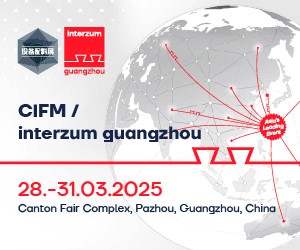Mustafa Gültepe, Chairman of the Türkiye Exporters Assembly (TİM) states that Türkiye’s textile exports peaked at 10.35 billion dollars in 2022, fell to 9.55 billion dollars in 2023 and 9.49 billion dollars in 2024. The target is 9.75 billion dollars in 2025. He points out that some companies have shifted production to Egypt due to high input costs and loss of competition. Among possible solutions, balancing input costs and shifting to value-added production are suggested. Green transformation may offer new opportunities.
Seeking balanced growth in textile exports in 2025
What are your expectations and projections for 2025 in the textile industry?
“Mustafa Gültepe: In 2022, our textile exports reached their highest value to date with 10 billion 350 million dollars. However, we have been going through a period of decline in our textile and ready-to-wear exports for the last two years. Our textile exports decreased to 9 billion 551 million dollars in 2023 and 9 billion 495 million dollars in 2024. The decline in 2023 was mostly due to the contraction in global demand. In 2024, we felt the negative repercussions of losing our competitiveness as the gap between input costs and exchange rates widened. Looking at the current data, we do not see a very optimistic picture for 2025. We anticipate that our textile and raw materials sector will close 2025 with an export volume of around 9 billion 750 million.”
Textile is not finished in Türkiye, new strategies are essential for competitiveness
Recently, criticisms such as “textile in Türkiye is over, production has shifted to the east and to countries such as Egypt” have been frequently voiced. How accurate do you think these comments are? What kind of a road map should the Turkish textile industry follow in 2025 and how do you see the future of the industry?
“Mustafa Gültepe: The foundations of industrialization in Türkiye were laid with textiles and ready-to-wear clothing. These two sectors pioneered the opening of our economy to exports. Today, we are global players in both sectors. If the right strategies can be designed in cooperation with the public and private sectors, we can contribute to our production, employment and exports with these two sectors for many more years. However, we have to accept one fact. Türkiye has become a very expensive country in production today. With current costs, our chances of competing with our competitors in Asia are diminishing. Some companies that have difficulty in keeping their prices in Türkiye are shifting some of their production to countries such as Egypt in order to survive in this period and maintain their customer portfolio.
As we have expressed at every opportunity, there is no other way out for the solution of the current problem in the short term other than the parallel movement of input costs and the exchange rate. In the medium and long term, we need to move away from price-oriented competition and increase our value-added production. Green transformation, in which we have an advantage over our Asian competitors, may open an important window of opportunity for our sector in this new period.”





